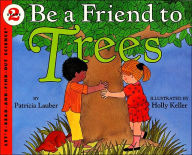Kathleen Weidner Zoehfeld is the award-winning author of more than seventy books for children. She has written several books in the Let’s Read And Find Out Science series, including: WHAT LIVES IN A SHELL?, an NSTA/CBC “Outstanding Science Trade Book” and winner of the American Association for the Advancement of Science’s “Best Children’s Book” award; WHAT IS THE WORLD MADE OF?, a Children’s Book of the Month Club Main Selection; WHAT’S ALIVE?, also named an AAAS “Best Children’s Book”; HOW MOUNTAINS ARE MADE, an NSTA/CBC “Outstanding Science Trade Book,” DINOSAUR TRACKS, "a great choice for even the most discriminating dinophiles" (School Library Journal); and DINOSAURS BIG AND SMALL, winner of the Oppenheim Toy Portfolio “Best Book Award”
Kathleen was a children’s book editor for over ten years before becoming a full-time writer. When she is not reading, researching, writing, or editing she loves to spend her free time exploring, doing fieldwork, and preparing and curating fossils for her local natural history museums. She lives in Berkeley, CA.
James Graham Hale has illustrated several other books for children, including 'Round and Around by James Skofield; Through Moon and Stars and Night Skies by Ann Turner, a Reading Rainbow Featured Selection; and Barney Is Best by Nancy White Carlstrom. Mr. Hale lives in Ulster Park, New York.



















